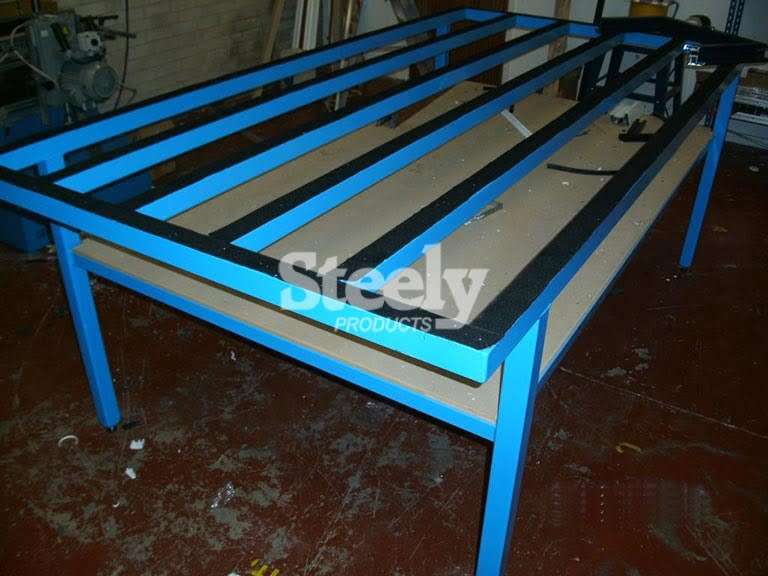A tubular steel packing table is simple and straightforward technology, but not just any table is suitable. Picking and packing operations vary, even within the same warehouse that has different packing areas. To design the perfect packing table station takes six steps.
1. Packing table tasks
The first step is to identify how tasks are performed at the packing table or tables. The table may need space for writing or a computer so that workers can check line items and consolidate orders. You’ll also need packing and protection material at the table.
Three more questions to bear in mind are:
•If an item arrives at the table damaged, what happens to it? How is it replaced?
•When and how are the items addressed and labelled?
•Once an item has been picked and packed, how does it get to the transport area for delivery?
The processes that take place at the packing table will affect its size, the number of shelves required and equipment such as storage boxes and inspection lamps that need to be added to the table.
If items are heavy, manual handling equipment may need to be available at the packing station.
2. Packing table sequence
After detailing the tasks that take place at the table, the next consideration is the sequence in which they take place. A typical sequence is consolidate orders, check items against packing lists, protect and pack the goods, stick address label on packages, then move items to dispatch areas.
To make this process efficient may require more than one table. There could be a table where goods are first placed, a wrap and pack table, and a dispatch table. Instead of a dispatch table, there could be a conveyor belt that takes goods directly to dispatch vehicles.
3. The interfaces
There are three primary packing station interfaces, taking orders to packing tables, refreshing supplies at the packing table and taking packed orders away. Refreshing packing stations includes replenishing packaging materials before they run out. For efficiency reasons, the packer should not have to leave their table for any of these interfaces.
4. The detailed material lists
Step four is to make a detailed list of all the material and equipment you will need for the packing tables. This should include everything from computers, to cardboard boxes, to the packing tape dispensers.
5. Document the procedures
Next, make sure you write a detailed walkthrough document of how the work pattern flows in the packing station, when and where equipment and materials are needs.
6. Design the packing tables and the packing station
After the first five steps have been completed, it’s time to design the table or tables. Note what needs to be stored above, under, at each side and behind the packer, and make the tables accommodate this pattern.
If possible, make the packing station flexible, experiment with different table arrangements until you reach the best solution. There is an art to designing the best packing table solution so that your picking and packing operation is organised and efficient.
Get a free quote
